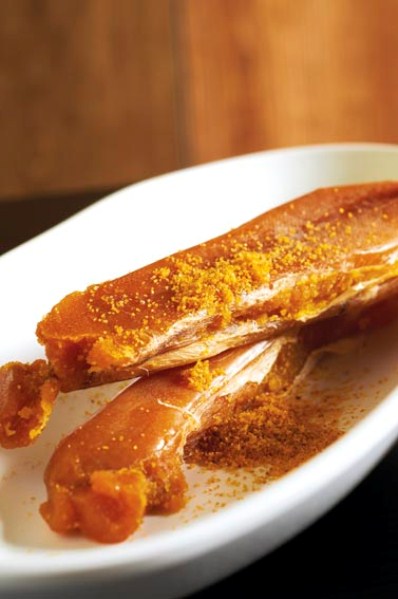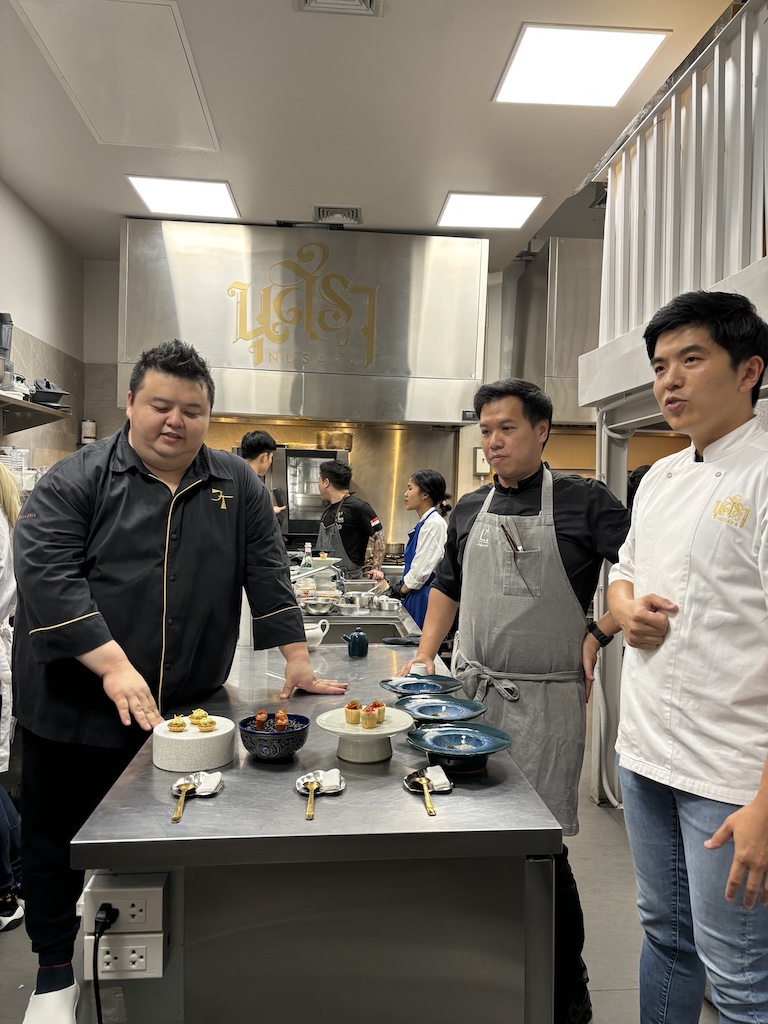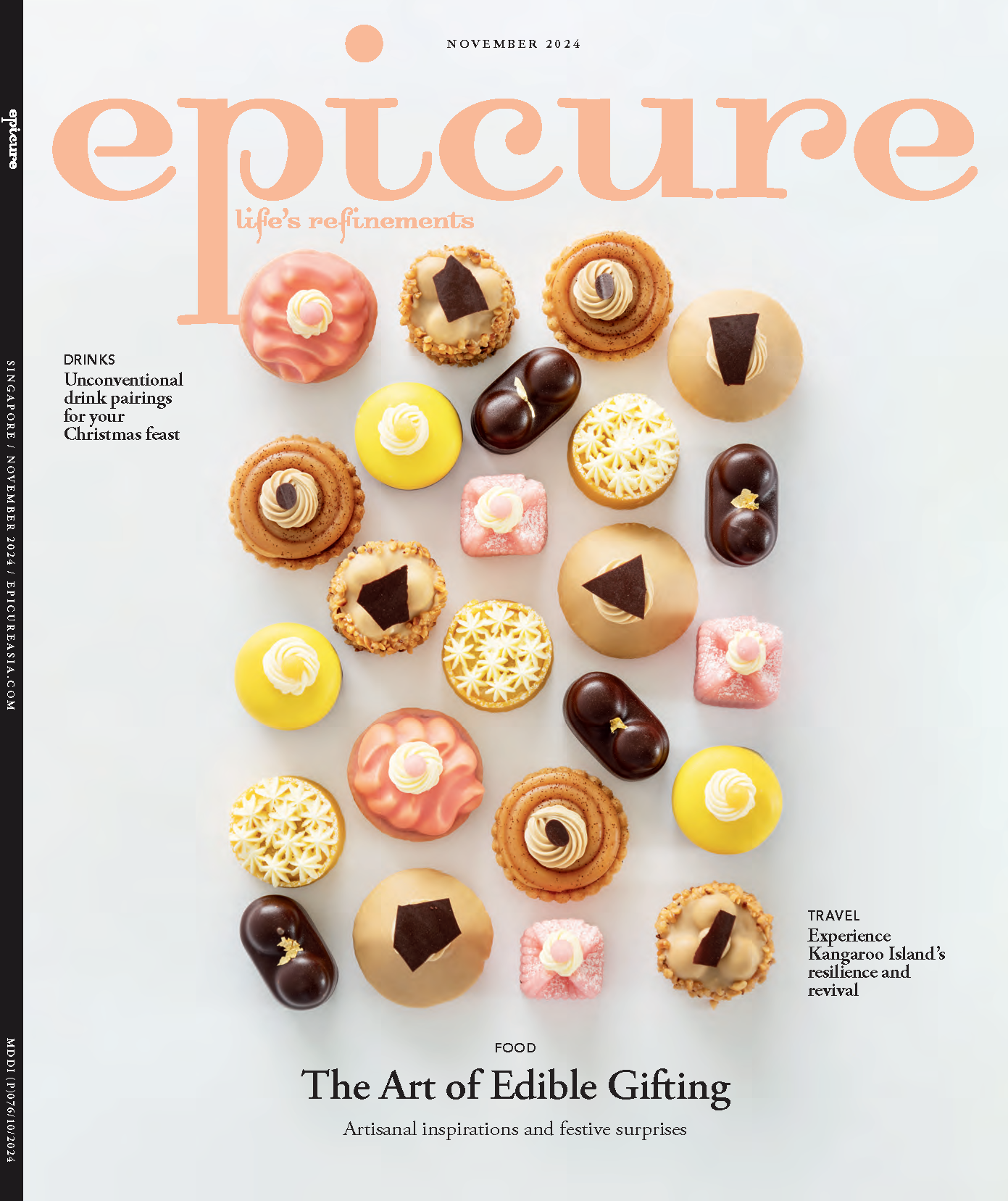Front roe status
To bring out the magic of this marine delicacy, bottarga is best used as a garnish on light flavoured dishes and mild sauces.

In Piedmont, they have the prized white truffle. In Sardinia, it’s the bottarga. In any respectable Sardinian restaurant, there’s a good chance your waiter would grate specks off a brown-amber, tongue-like chunk onto your plate of piping hot linguine. And, depending on your attitude towards blue cheese and anchovies, you’d either be enchanted or turned off by the briny, and sometimes pungent, aroma emerging from those brown crumbs.
Despite its status as a Sardinian delicacy, the bottarga—the dried roe pouch of the grey mullet (bottarga di muggine) or tuna (bottarga di tonno)—is still known rather unfairly by its label of a poor man’s caviar. Its preparation is anything but simple: the roe sac is first massaged by hand to get rid of air pockets and then cured in sea salt; the latter a practice that can range from a few days to a few weeks, depending on the producer’s requirements. The roe is then pressed by wooden planks to achieve its compressed shape before it is hung to dry. To maintain its shape and prevent it from drying out, it is coated in beeswax.
Excerpt from the December issue of epicure.
SHARE

















 SUBSCRIBE
SUBSCRIBE